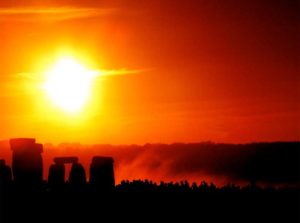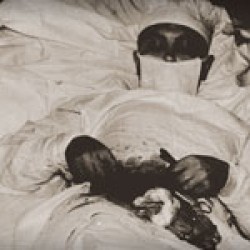
Preliminary results from DNA tests carried out on a mummy believed to be Queen Hatshepsut is expected to support the claim by Egyptian authorities that the remains are indeed those of Egypt’s most powerful female ruler.
Egyptologists in Cairo announced last month that a tooth found in a wooden box associated with Hatshepsut exactly fitted the jaw socket and broken root of the unidentified mummy.
Now, Dr Angelique Corthals, a biomedical Egyptologist at The University of Manchester, says that DNA tests she helped carry out with colleagues at the National Research Centre in Cairo have promising preliminary results suggesting the identity of the queen.
Dr Corthals, who is based at Manchester’s KNH Centre for Biomedical Egyptology, advised and trained a team led by Dr Yehia Gad in Egypt in techniques of extracting DNA samples from the mummified remains of the mystery female.
The group then compared the DNA samples with those taken from Hatshepsut’s royal relatives, her grandmother Ahmose Nefertari, the matriarch of 18th dynasty royalty, and her father Thutmose I.
“The difficulty in carrying out DNA testing on the royal mummies resides in the many times the remains have been handled as well as the chemical processes of mummification,” said Dr Corthals.
Ironically, the chemicals that preserve the appearance of the mummies actually damage their DNA but the team was able to extract small amounts of genetic information from the areas of the mummies least affected by contamination.
“When the DNA of the mystery mummy was compared with that of Hatshepsut’s ancestors, we were able to scientifically confirm that the remains were those of the 18th dynasty queen.”
Hatshepsut, meaning ‘Foremost of Noble Ladies’, was Egypt’s greatest female ruler, having greater power than even Cleopatra. The fifth pharaoh of the 18th dynasty, her reign in the 15th century BC was longer than any other female ruler of an indigenous dynasty
Most of the 18th dynasty royal mummies were moved away from their original tombs in the Valley of the Kings by the priests of the 21st dynasty fearing desecration and tomb robberies.
The cache was discovered in the 1870s by the Razzul brothers and, in 1881, all 40 mummies were moved to Cairo. However, Hatshepsut’s remains appeared to be missing and it was feared the mummy was lost, having been moved by her stepson Thutmose III, who, on succession, tried to destroy every trace of her reign.
However, in 1903, a British archaeologist, Howard Carter, excavated what became known as tomb KV60 and discovered two mummies – one in a coffin inscribed for a royal nurse, the other stretched out on the floor.
In June, Dr Zahi Hawass, Secretary General of the Supreme Council of Antiquities, held a news conference in Cairo to announce that this second mummy was that of the lost queen, pointing to the tooth as evidence.
The preliminary DNA evidence, to be included in a Discovery Channel documentary, suggests that the mummy is indeed the great queen Hatshepsut.
The team is now planning to carry out more tests on the 40 remaining royal mummies, including that of Tutankhamun, in order to resolve the many questions surrounding the genealogy of the 18th and 19th dynasties.
Further DNA testing is expected to help resolve such mysteries as the identity of the mummy of Tuthmosis I: Is it really the mummy of the mighty warrior-king of the 18th dynasty or just the remains of a nobleman? And were the two foetuses found in Tutankhamun’s tomb really the children of the young pharaoh?
External Links:
Manchester University
Find of century for Egyptology (BBC)
Egyptians: Mystery mummy is lost female pharaoh (CNN)












